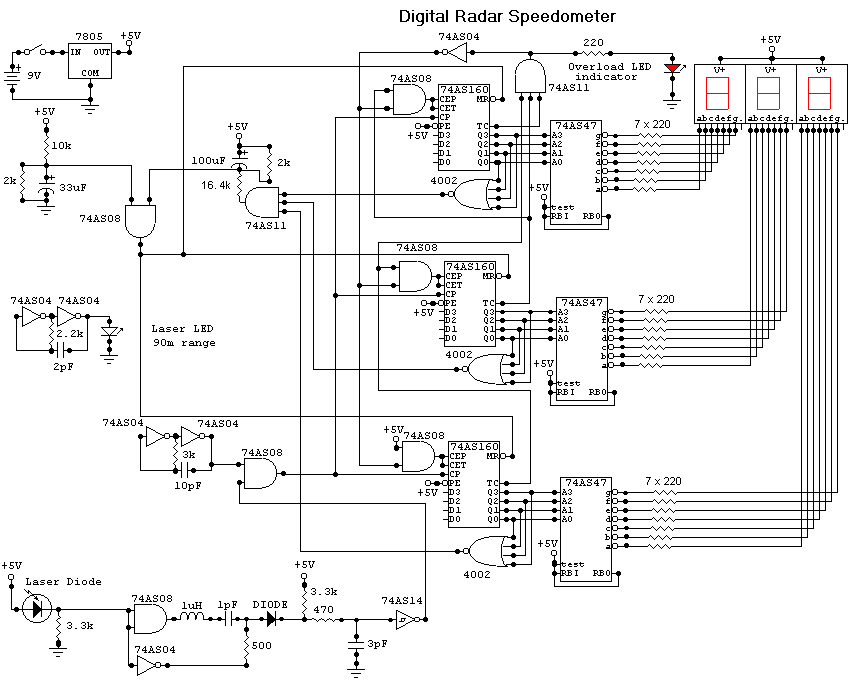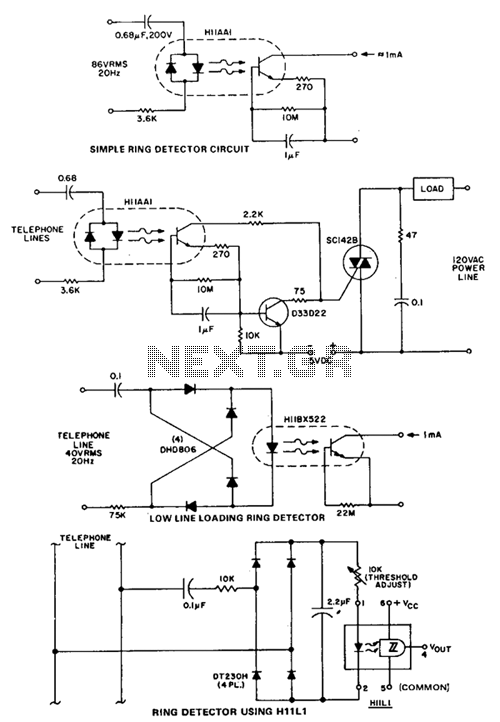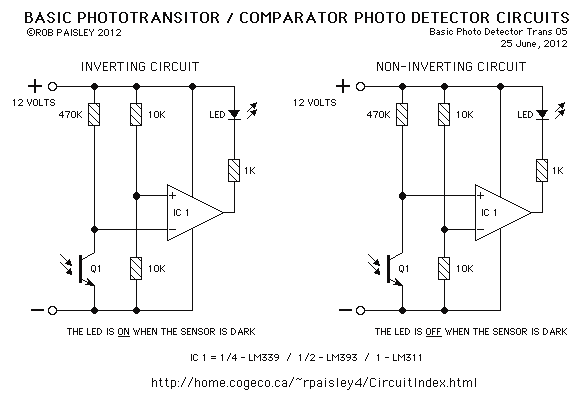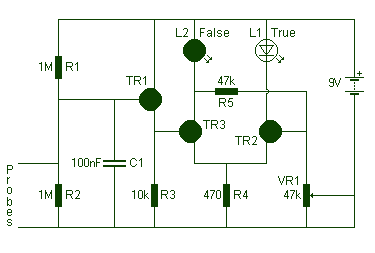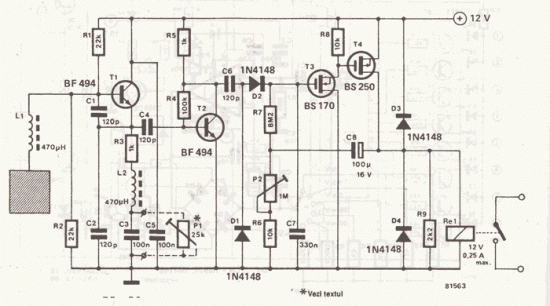
Radar Detector
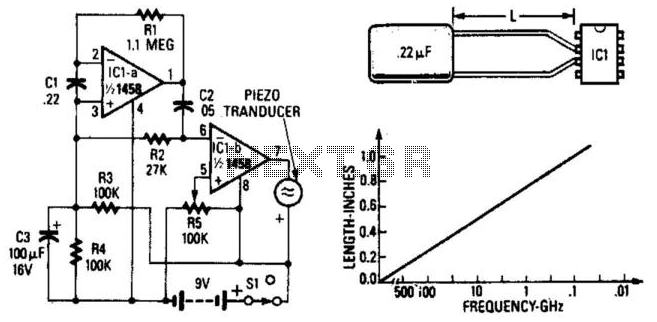
A simple radar signal detector utilizes the junctions of the input transistors of an LM1458 operational amplifier as RF detectors. The leads of the integrated circuit function as an antenna and should be approximately 0.4 inches long, measured from the IC package. The detected audio components are further amplified by IC1A and IC1B, which then drive a piezo transducer. It is essential to mount the circuit in a manner that does not obstruct incoming RF energy.
The radar signal detector circuit is designed around the LM1458 dual operational amplifier, which is configured to exploit the inherent properties of its transistor junctions for RF signal detection. The circuit employs the input junctions of the op-amp as rectifying elements, allowing for the conversion of high-frequency radar signals into lower-frequency audio signals.
To enhance sensitivity, the leads of the LM1458 should be extended to approximately 0.4 inches, acting as a simple monopole antenna. This length has been chosen to optimize the reception of radar frequencies, ensuring effective coupling with the electromagnetic waves.
Once the RF signals are detected, they are processed by the first stage of the operational amplifier (IC1A), which functions as a non-inverting amplifier. This stage amplifies the weak audio components extracted from the radar signals. The output from IC1A is then fed into the second stage (IC1B), which serves a similar purpose, providing additional gain to ensure that the audio signals are sufficiently strong to drive the output device.
The output of IC1B is connected to a piezo transducer, which converts the amplified audio signals into sound. This transducer is critical for providing an audible indication of detected radar signals, making the circuit useful for various applications, such as surveillance or signal monitoring.
When assembling the circuit, careful consideration should be given to the mounting orientation. The circuit must be positioned in a way that allows unobstructed access to incoming RF energy, ensuring maximum sensitivity and performance. Proper placement and orientation will significantly enhance the effectiveness of the radar signal detection. A simple detector of radar signals uses the junctions of the input transistors of an LM1458 op amp as RF detectors. The lead s of CI act as an antenna and should be about 0.4" long measured from the IC package. Detected audio components are further amplified by IC1A and IC1B, and drive a piezo transducer. Mount the circuit so that incident RF energy will not be blocked.
The radar signal detector circuit is designed around the LM1458 dual operational amplifier, which is configured to exploit the inherent properties of its transistor junctions for RF signal detection. The circuit employs the input junctions of the op-amp as rectifying elements, allowing for the conversion of high-frequency radar signals into lower-frequency audio signals.
To enhance sensitivity, the leads of the LM1458 should be extended to approximately 0.4 inches, acting as a simple monopole antenna. This length has been chosen to optimize the reception of radar frequencies, ensuring effective coupling with the electromagnetic waves.
Once the RF signals are detected, they are processed by the first stage of the operational amplifier (IC1A), which functions as a non-inverting amplifier. This stage amplifies the weak audio components extracted from the radar signals. The output from IC1A is then fed into the second stage (IC1B), which serves a similar purpose, providing additional gain to ensure that the audio signals are sufficiently strong to drive the output device.
The output of IC1B is connected to a piezo transducer, which converts the amplified audio signals into sound. This transducer is critical for providing an audible indication of detected radar signals, making the circuit useful for various applications, such as surveillance or signal monitoring.
When assembling the circuit, careful consideration should be given to the mounting orientation. The circuit must be positioned in a way that allows unobstructed access to incoming RF energy, ensuring maximum sensitivity and performance. Proper placement and orientation will significantly enhance the effectiveness of the radar signal detection. A simple detector of radar signals uses the junctions of the input transistors of an LM1458 op amp as RF detectors. The lead s of CI act as an antenna and should be about 0.4" long measured from the IC package. Detected audio components are further amplified by IC1A and IC1B, and drive a piezo transducer. Mount the circuit so that incident RF energy will not be blocked.
